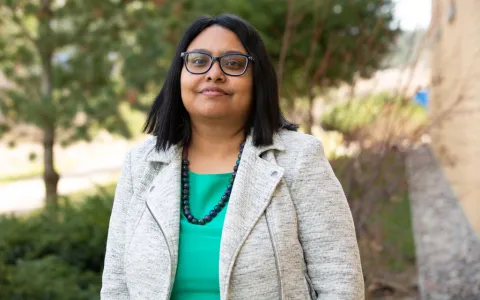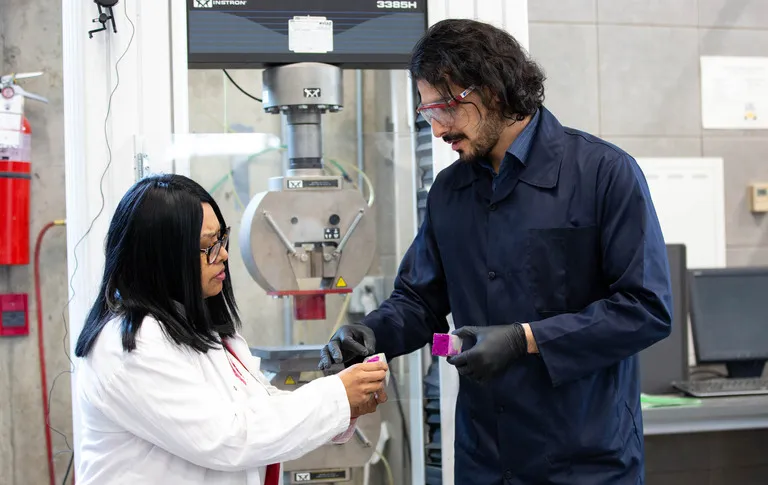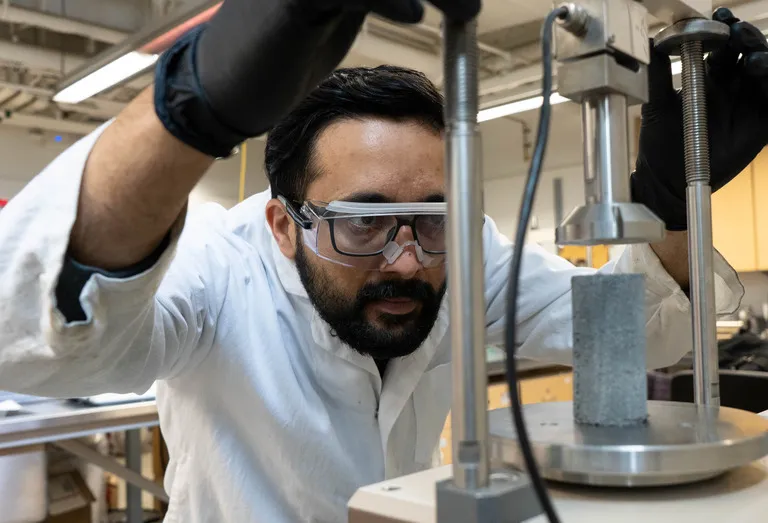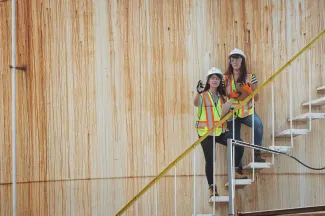“You can have a big impact as an engineer by focusing on small things.”
Dr. Sumi Siddiqua's research on soil micro-organisms is paving the way for new geomaterials with significantly lower carbon dioxide emissions than traditional materials used in the construction industry. She’s also working to keep our groundwater safe by finding more effective ways to stop microplastics in landfills from moving into water systems.

- Program:
- Campus: Okanagan
Website: School Profile
Education: PhD in Civil Engineering (Cardiff University, United Kingdom); MASc in Engineering and Applied Geology (Asian Institute of Technology, Thailand); BASc in Civil Engineering (Khulna University of Engineering and Technology, Bangladesh)
Tell us about your research on soils.
I’m a geo-environmental engineer who studies soils and the environment. Soil is a very interesting and exciting material, and as a natural product it has different qualities depending on where it’s found.

"When you’re doing any kind of construction, you need to start by knowing the soil."
One of my main research areas is exploring how micro-organisms can improve soil quality for applications in the construction industry. I’m investigating common industrial by-products – like fly ash that is produced as waste in the pulp and paper industry – and seeing if we can use that waste in other applications, like as a low-carbon soil binder to improve ground conditions when constructing roads or buildings. This uses a product traditionally considered waste and can also result in lower carbon dioxide emissions because you need less cement and are sequestering carbon in the material itself.
Another big issue I’m examining is the prevalence of microplastics. I’m looking at ways to prevent the movement of microplastics from landfills into our groundwater by developing barriers that use soils or industrial by-products to capture these microplastics.
Why is your research important?
"The construction industry is a significant contributor to carbon emissions and climate change. My work is focused on reducing that impact."
Our landfills can be a significant source of pollution, including microplastics that can harm the environment and human and animal health. Finding ways to change the design of landfill containment systems could prevent microplastics from getting into our water.
How does your research influence your teaching?
"The textbooks required for courses cover the fundamentals of the subject. But fundamentals are not enough for engineers. We need to know how to apply this fundamental knowledge to real-world issues."
As a professor, I bring my researcher’s perspective into the classroom and can share my challenges, experiences and solutions with the class.










